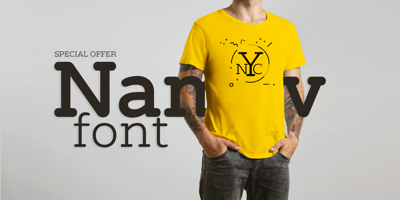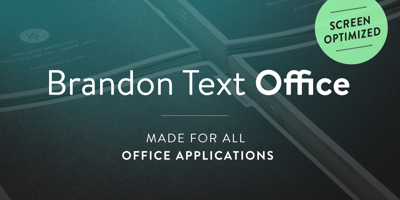Font Families: Using Regular, Bold, and Italic Variations Correctly
Font Families: Using Regular, Bold, and Italic Variations Correctly
A font family is more than just a single style—it's a complete system of related typefaces designed to work together. Understanding how to use regular, bold, italic, and other variations correctly separates amateur typography from professional design. Let's explore how to leverage font families effectively.
What is a Font Family?
A font family is a collection of typefaces that share common design characteristics but differ in weight, width, or style. Think of it like a family of people—they share DNA but have distinct personalities.
A basic font family includes:
- Regular (also called Roman or Book)
- Bold
- Italic
- Bold Italic
Professional font families often include many more variations: Light, Medium, Semibold, Black, Condensed, Extended, and more.
Understanding Font Weights
Font weight refers to the thickness of the strokes that make up letterforms. Most font families offer multiple weights to create hierarchy and emphasis.
Common Weight Names
- Thin/Hairline (100) - Extremely light, delicate appearance
- Extra Light/Ultra Light (200) - Very light, elegant
- Light (300) - Lighter than regular, refined
- Regular/Normal/Book (400) - Standard reading weight
- Medium (500) - Slightly heavier than regular
- Semibold/Demibold (600) - Between regular and bold
- Bold (700) - Strong emphasis, heavy weight
- Extra Bold/Ultra Bold (800) - Very heavy
- Black/Heavy (900) - Extremely thick and powerful
When to Use Different Weights
Light (300): Large headlines where elegance matters, minimalist designs, fashion and luxury brands. Avoid for body text—too thin for comfortable reading.
Regular (400): Body text, paragraphs, long-form content. This is your workhorse weight for most text.
Medium (500): Subheadings, callouts, labels. Provides emphasis without the heaviness of bold.
Bold (700): Strong emphasis within text, important headings, calls-to-action, navigation elements.
Black (900): Major headlines, attention-grabbing elements, impactful statements. Use sparingly for maximum effect.
Using Regular (Roman) Correctly
Regular weight is the foundation of your typography. It should be readable, comfortable, and suitable for extended reading.
Best Practices
Do:
- Use for body text and paragraphs
- Set at 16-18px for web, 10-12pt for print
- Maintain consistent line spacing (leading)
- Ensure adequate color contrast with background
Don't:
- Mix multiple regular-weight fonts in body text
- Use regular weight for elements requiring emphasis
- Set regular weight too small (under 14px/9pt)
Using Bold Effectively
Bold creates emphasis and hierarchy. But like hot sauce, a little goes a long way.
When to Use Bold
Appropriate uses:
- Keywords or key phrases within sentences
- Headings and subheadings
- Navigation menus
- Labels and form fields
- Calls-to-action
- Important warnings or notices
Bold Mistakes to Avoid
Over-bolding: Bolding entire paragraphs defeats the purpose. If everything is emphasized, nothing stands out.
Bold body text: Never set entire articles or long passages in bold. It's exhausting to read and looks amateurish.
Fake bold: Never use software's "faux bold" feature. Always use the actual bold weight from the font family. Faux bold distorts letterforms and looks unprofessional.
Creating Hierarchy with Bold
Use bold systematically to create clear content hierarchy:
- Main headline: Bold, largest size
- Subheading: Bold, medium size
- Body text: Regular weight
- Captions: Regular, smaller size
This creates visual paths through your content.
Understanding Italic and Oblique
Italic and oblique are often confused, but they're different.
Italic: A distinct font design with different letter shapes. True italics have calligraphic influences—letters flow and connect differently than their upright counterparts.
Oblique: Simply slanted versions of regular letters. The letterforms don't change; they're just tilted.
Professional font families include true italics. Basic or poorly designed fonts only offer oblique (fake) versions.
When to Use Italic
Appropriate uses:
- Emphasis within sentences (alternative to bold)
- Book titles, movie names, publication names
- Foreign words or phrases
- Scientific names (Latin species names)
- Thoughts in narrative writing
- Introducing new terms
Italic Best Practices
Do:
- Use sparingly for subtle emphasis
- Use true italics, never fake/oblique versions
- Maintain readability—some italic fonts are less legible
Don't:
- Italicize entire paragraphs (hard to read)
- Use italic for headings (usually lacks impact)
- Combine italic with all-caps (nearly impossible to read)
- Use italic for Chinese, Japanese, or Korean text (these languages don't have italic traditions)
Bold Italic: The Power Combo
Bold italic combines both variations. Use it rarely and strategically for maximum impact.
When to Use Bold Italic
Rare appropriate uses:
- Extra strong emphasis within already-bold text
- Highlighting specific terms in bold headings
- Special design elements requiring unique treatment
General rule: If you find yourself using bold italic frequently, reconsider your typography strategy. It's a specialized tool, not an everyday option.
Working with Extended Font Families
Professional font families offer numerous variations beyond basic four (regular, bold, italic, bold italic).
Taking Advantage of Multiple Weights
With 6-9 weight options, you can create sophisticated hierarchy without changing fonts:
Example hierarchy using Roboto:
- Main headline: Roboto Black (900)
- Section headers: Roboto Bold (700)
- Subheadings: Roboto Medium (500)
- Body text: Roboto Regular (400)
- Captions: Roboto Light (300)
This creates clear distinction while maintaining perfect harmony—all from one font family.
Condensed and Extended Variations
Condensed: Narrower letterforms, useful when space is tight. Great for sidebars, narrow columns, or fitting more text.
Extended/Wide: Broader letterforms, useful for impact and presence. Works well for headlines demanding attention.
Use these variations intentionally, not just because they exist.
Mixing Styles: What Works and What Doesn't
Acceptable Combinations
Bold + Italic: Creates clear emphasis hierarchy. Bold for strong emphasis, italic for subtle emphasis.
Light + Bold: Maximum contrast for dramatic headlines paired with refined body text.
Regular + Bold + Medium: Creates three-tier hierarchy without being excessive.
Problematic Combinations
Mixing too many weights: Using 5-6 different weights creates chaos. Limit yourself to 3-4 maximum per project.
Bold + Underline: Redundant emphasis. Choose one or the other.
Italic + Script fonts: Script fonts already slant; italicizing them creates awkward, unreadable text.
Technical Considerations
True vs Faux Styles
Always use actual font family variations, never software-generated fake versions:
True Bold: Designed with proper weight distribution, balanced proportions Faux Bold: Crudely thickened regular text, distorted and unprofessional
True Italic: Uniquely designed letterforms with proper flow Faux Italic: Mechanically slanted regular text, awkward and amateur
Professional designers can spot faux styles immediately. Always use real font family members.
Loading Multiple Weights
Each weight is a separate file. Loading eight weights slows your website. Be strategic:
- Identify which weights you actually use
- Load only those specific weights
- Consider variable fonts that include all weights in one file
CSS and Font Families
In CSS, specify font families correctly:
/* Correct */
font-family: 'Roboto', sans-serif;
font-weight: 700; /* Bold */
/* Incorrect - might trigger faux bold */
font-family: 'Roboto', sans-serif;
font-weight: bold; /* Use numeric values */
Creating Consistent Typography Systems
Professional designs establish clear rules for font family usage:
Example system:
- H1: Bold, 36px
- H2: Semibold, 24px
- H3: Medium, 18px
- Body: Regular, 16px
- Caption: Regular, 14px
- Emphasis: Italic or Bold (never both)
Document these rules in style guides to ensure consistency across all materials.
Common Mistakes to Avoid
The "More is Better" Trap
Using every available weight doesn't make your design better. It creates visual noise. Restraint and intention create professional typography.
Inconsistent Emphasis
If you use bold for emphasis in one paragraph, use it consistently throughout. Mixing bold and italic randomly for the same purpose looks sloppy.
Ignoring Hierarchy
Using similar weights for elements of different importance confuses readers. Create clear visual distinction between heading levels and body text.
Forgetting About Accessibility
Ensure sufficient contrast between text and backgrounds for all weights. Light weights on light backgrounds become invisible to users with visual impairments.
Final Thoughts
Mastering font family variations is about understanding both the tools available and when to use them. Each weight and style serves specific purposes—learning those purposes elevates your typography from random to intentional.
Start simple: regular for body text, bold for headings, italic for subtle emphasis. As you gain confidence, explore the full range of weights to create sophisticated, nuanced typography systems.
Remember: having access to nine weights doesn't mean using all nine. Professional typography shows restraint, using just enough variation to create hierarchy and emphasis without overwhelming readers. That balance—between variety and consistency—defines exceptional type design.



